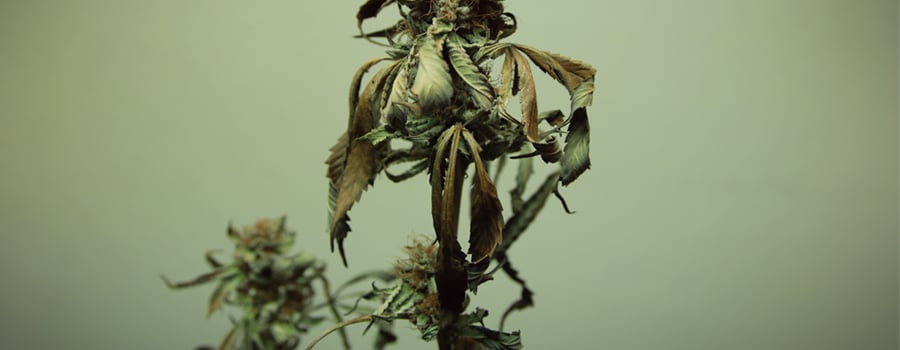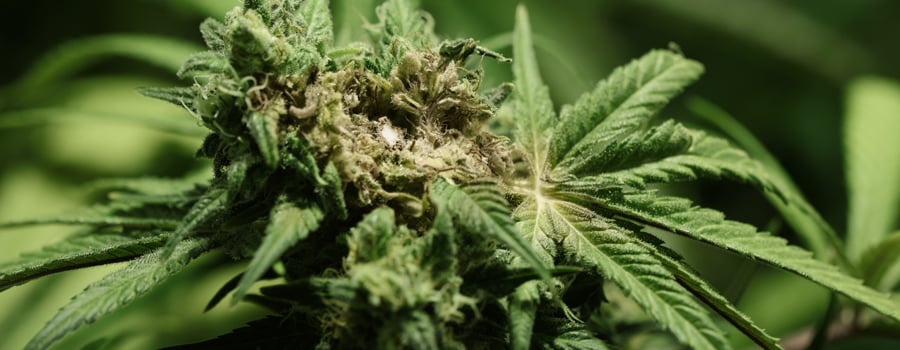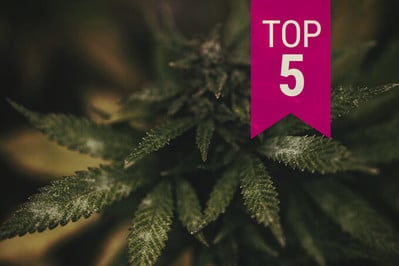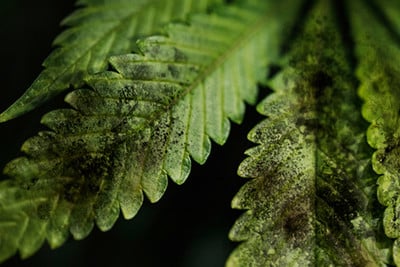.

How To Protect Your Weed Plants From A Fungal Fusarium Invasion
Fusarium can wipe out entire cannabis crops. Once it enters the soil, it starts clogging up the xylem and prevents cannabis plants from uptaking nutrients and water. Without these key resources, plants soon begin to keel over a die, a condition known as Fusarium wilt. Use these methods to prevent Fusarium from taking hold of your growing space.
Contents:
Despite all of the benefits of growing your own weed, you’ll likely come across several challenges along the way. Before your young seedlings morph into flower-bearing beauties, chances are you’ll encounter a few pest insects and one or two species of fungi.
We’re not the only species that has a penchant for pot. Although we adore the psychoactive effects, insects and fungi seek out weed plants as a source of food and shelter. While a few insect bites aren’t a big deal, some fungal infections—especially Fusarium—pose a significant threat to the health of your crop.
As a particularly problematic pathogen, Fusarium dwells just below the surface of the soil and targets the root system. Because the roots play such a critical role in cannabis plant physiology, any damage can spell disaster for yields and plant health.
You shouldn’t fear Fusarium, but you should be prepared for it. Use the information below to learn the most important facts about this condition, and what you can do to prevent it.
What Is Fungal Fusarium?
Fusarium is a large genus of various filamentous fungi. There are thirteen subdivisions that belong to this group, consisting of a total of thirty species. Not all of these species cause harm to plants. In fact, some of them play an important role in the soil food web.
Out of this long list of species, Fusarium oxysporum strikes cannabis right where it hurts—in the root system. Although this fungus remains harmless and even beneficial to some plants in nature, it can wreak havoc in agricultural settings.
Researchers believe the species descended from a less aggressive and nonpathogenic ancestor that is only associated with the cortex—or outer layer—of plant roots. An adaptation that allowed the fungi to penetrate into the vascular tissue of the plant likely replaced the previously more peaceful survival strategy.
Fusarium works so effectively as a cannabis pathogen that certain governments around the world recruited the fungus in the highly detrimental war on drugs. By spraying the fungus over crop fields, they could launch an aerial attack against illicit cannabis farms and save us all from a harmless herb!
Geopolitics aside, Fusarium will do some real damage to your cannabis plants. The pathogen can exist in the soil for years at a time, where it breaks down and devours organic matter. If fortunate enough, it will make contact with your cannabis roots and begin to colonise your weed plants.

What Does Fungal Fusarium Do to Cannabis Plants?
Fusarium leads to a condition known as Fusarium wilt. After launching an attack on the root system, the pathogen prevents cannabis plants from uptaking the vital resources they need to survive. This results in a weak and wilting plant that will struggle to survive, let alone produce a viable harvest.
After making contact with the root cortex, Fusarium penetrates into the xylem. Cannabis plants depend on this vascular tissue to conduct water and dissolved nutrients up into the stem for distribution around the entire plant.
Key nutrients such as nitrogen play a vital role in the creation of chlorophyll, and plants need potassium to move nutrients around the plant. They also depend on water as a key part of the equation for photosynthesis. When Fusarium cuts off these important lifelines, cannabis plants rapidly wilt, topple, and die.
How to Spot a Fungal Fusarium Infection
There are several key factors to look out for when diagnosing a Fusarium infection. Although some of these symptoms also occur in other conditions, such as nutrient deficiencies, the speed of the decline in plant health points towards a Fusarium infection.
Look for the following symptoms:
- Yellowing and wilting leaves
- Slowed or stunted growth
- Root and stem decay
- Red-colored roots just under the topsoil
- Reddish discoloration of the xylem vessel, only visible after dissecting the stem
- Orange, pink, or white fungal growth on the outside of stems
- Swelling stems that may eventually split due to pressure
- A spread of decay and necrotic tissue up the stem
How to Treat Fungal Fusarium in Cannabis Plants
Here’s the bad news: You can’t. At least not yet. No cure or valid treatment exists to tackle Fusarium infections. The fungi also attack beans, tomatoes, peas, and asparagus. These vegetables are grown on a huge scale and make up part of the massive agriculture industry upheld by research institutions, and still nothing.
With no biological or chemical controls at your disposal to tackle this pathogen, prevention becomes the main line of defense.

Preventing Fungal Fusarium Attacks in the Future
Once Fusarium wilt sets in, it can impact your outdoor growing operations for quite some time. Use the methods below to minimise future occurrences.
- Surrender infected ground: Once Fusarium settles into a patch of ground, it will remain there for years to come. You won’t be able to plant cannabis there for the next few seasons. Part of the prevention strategy involves not reusing ground where plants were previously infected.
- Plant in pots: Growing cannabis in pots and containers creates a semi-isolated environment. The growing medium of individual plants remains separate, which may help to prevent the spread of Fusarium from one root system to the next.
- Destroy infected plants: Fusarium can continue to survive in infected plants. Burn any infected material in an isolated area of your garden and never add it to your compost pile. Wash any tools that have come into contact with the plant with a hydrogen peroxide solution.
- Beneficial fungi: Inoculate your soil with mycorrhizal fungi. Not only do these beneficial microbes help plants absorb nutrients, but they might also lower the occurrence of other fungal pathogens.
- Manage soil pH: Routinely test your soil pH. Fusarium prefers more acidic soil. If your numbers are off, neutralise the soil with dolomite lime.
Don’t Be Put Off
Don’t let Fusarium wilt put you off the joy of growing cannabis outside. Many growers harvest their crops every year without ever facing this issue. Even if you never encounter Fusarium, it’s worth knowing what can be done to minimise its ideal conditions. Now, get your hands in the soil, your face in the sun, and grow on!







































